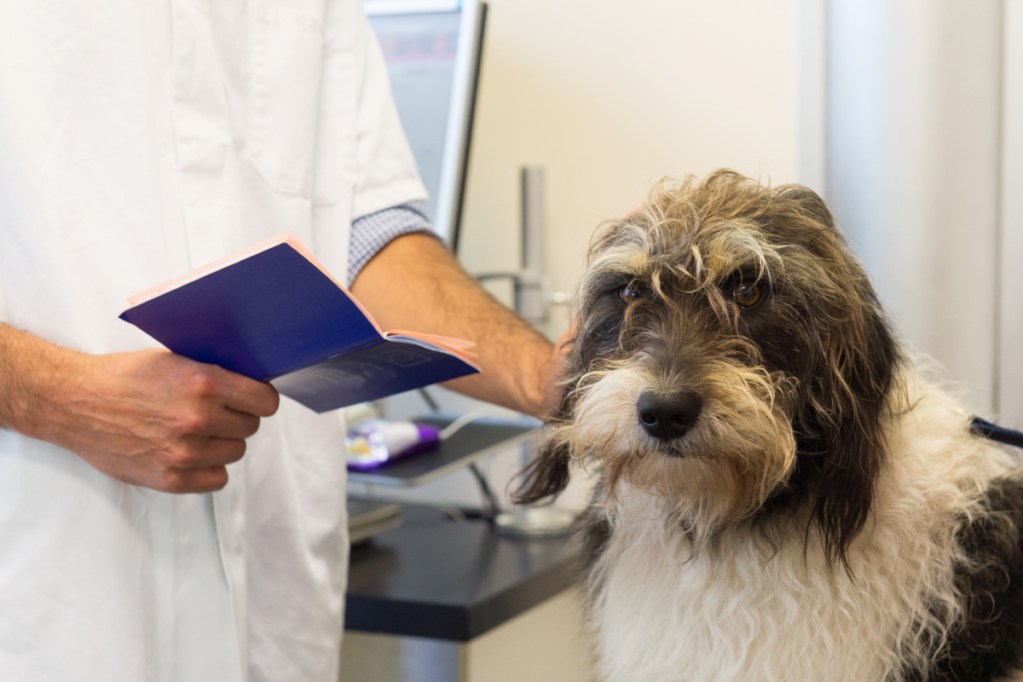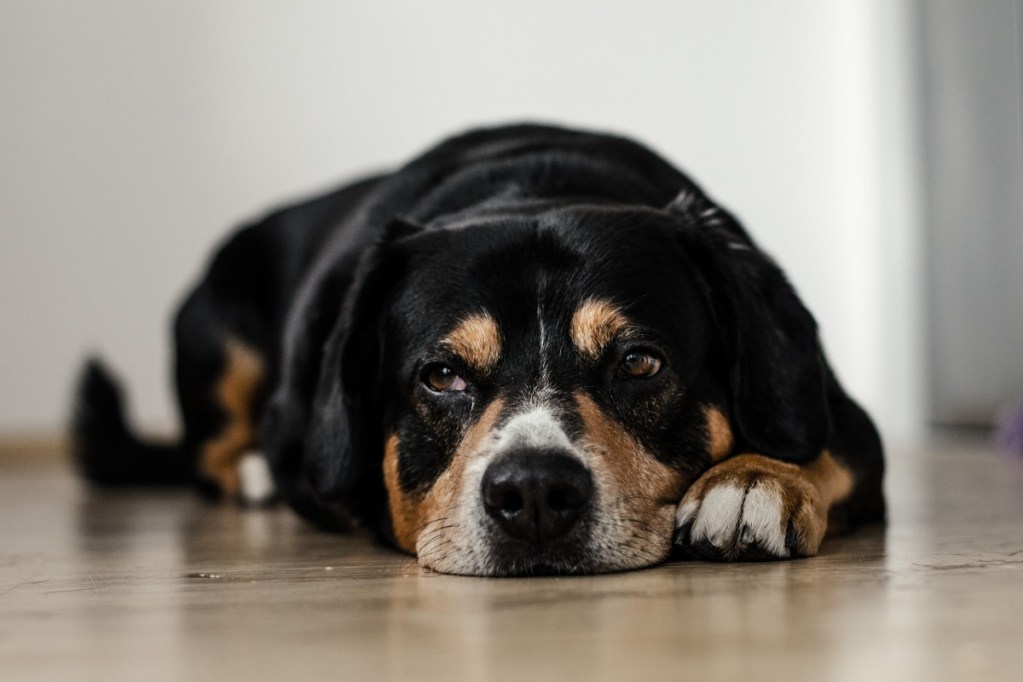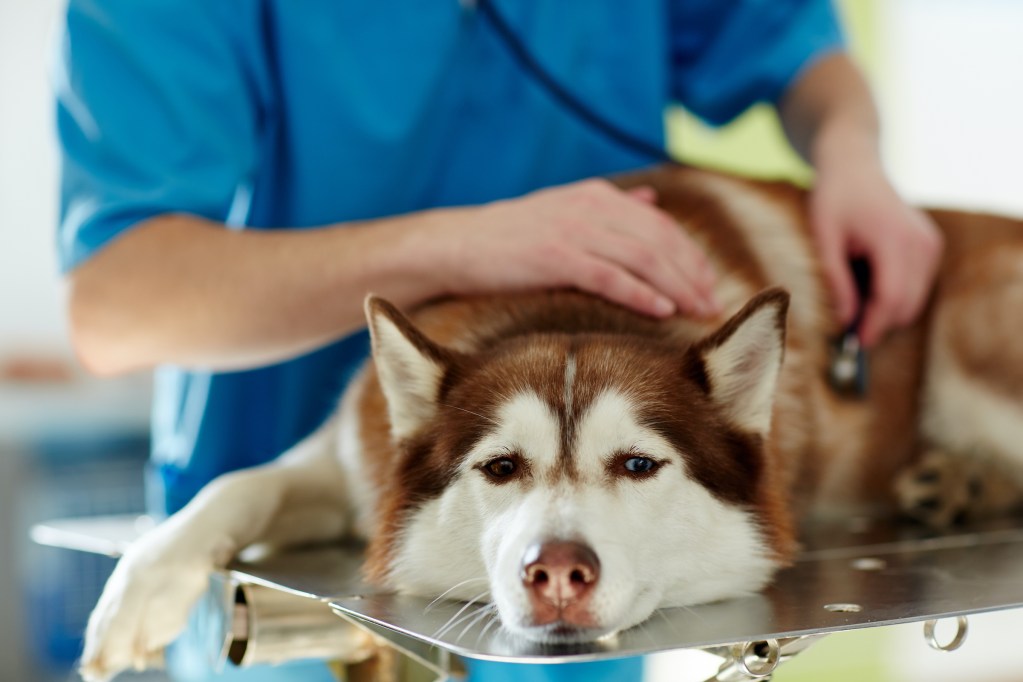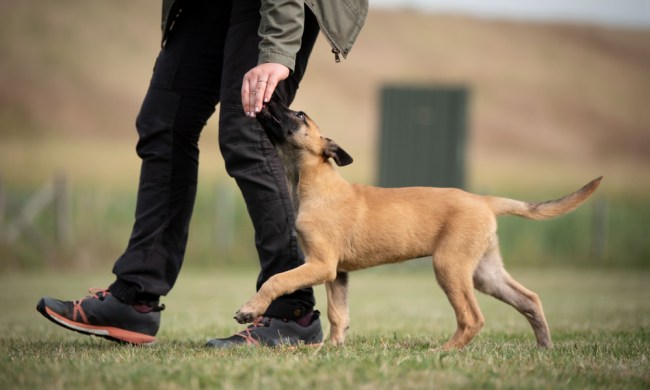You’ve likely heard about thyroid issues occurring in humans, including cancer. However, dogs can develop thyroid conditions, too, including hyperthyroidism and hypothyroidism.
- What do hyperthyroidism and hypothyroidism mean?
- What puts a dog at greater risk for hyperthyroidism or hypothyroidism?
- What are the common signs and symptoms of thyroid problems in dogs?
- What happens if hyperthyroidism or hypothyroidism are left untreated?
- What’s treatment like for dogs with thyroid conditions?
Before getting into what these terms mean, let’s discuss the thyroid gland. It’s situated in your pup’s neck near the trachea and is responsible for regulating their metabolic rate. Metabolism is important because it’s how your body converts food into energy and can affect your dog’s weight and overall health.
Hyperthyroidism and hypothyroidism in dogs are two metabolic disorders. They sound the same and even have similar symptoms, but they’re the opposite of one another. The good news is that both are typically treatable and not fatal. Let’s dig deeper into thyroid problems in dogs.

What do hyperthyroidism and hypothyroidism mean?
Hyperthyroidism in dogs occurs when the thyroid overproduces hormones, which causes their metabolism to speed up. It’s essentially an overactive thyroid.
Hypothyroidism in dogs is the opposite. Dogs with this condition have thyroids that do not produce enough hormones, leading to a slowdown of their metabolism. In other words, dogs with hypothyroidism have underactive thyroids.
These conditions may sound scary, but understanding them can help you advocate for your dog.

What puts a dog at greater risk for hyperthyroidism or hypothyroidism?
Hyperthyroidism and hypothyroidism are both rare, but they can happen. Unfortunately, it’s not possible to prevent these conditions in the same way it’s possible to take steps to reduce the risk of other issues. For example, daily walks and a healthy diet of mostly dog food can help to mitigate obesity, diabetes, and heart problems.
When it comes to hyperthyroidism or hypothyroidism, it’s often the luck of the draw.
However, there are a few factors that up the chances of thyroid issues in dogs, such as:
- Medication: Medication to treat hypothyroidism may trigger hyperthyroidism.
- Size: These disorders are more common in mid to large-sized dogs.
- Breed: Golden Retrievers are at an increased risk for developing hyperthyroidism or hypothyroidism. Hyperthyroidism is more commonly seen in Beagles and Siberian Huskies, while Cocker Spaniels and Irish Setters are predisposed to hypothyroidism.
- Age: Thyroid problems in dogs typically happen during middle-age and senior years.
What are the common signs and symptoms of thyroid problems in dogs?
It’s important to note that only a vet can diagnose a thyroid issue in your dog. They’ll run diagnostic blood tests to check your dog’s thyroid hormone levels. That said, no one spends more time with your dog than you do, so knowing common red flags can empower you to advocate for your pet and have a vet perform the necessary tests.
Dogs with hyperthyroidism or hypothyroidism often display symptoms like:
- Sudden weight gain or loss
- Lethargy
- Changes in appetite
- Vomiting
- Diarrhea
- Increased thirst
- Urinating more than usual
- Rapid or slowed heart rate
- A lump on the neck
- Hyperactivity
- Thinning coat
- Difficulty moving or lameness
- Hair loss or thinning
- Chronic skin infections
- Skin pigmentation changes
- Seizures

What happens if hyperthyroidism or hypothyroidism are left untreated?
Again, dogs with hyperthyroidism and hypothyroidism can continue to lead happy lives, but treatment is essential. Left untreated, the issue can compound and affect other organs. Dogs may have difficulty maintaining a healthy weight, experience high cholesterol, and be at an increased risk for other illnesses because of immune dysfunction.
In a worst-case scenario, untreated hyperthyroidism or hypothyroidism can become fatal.

What’s treatment like for dogs with thyroid conditions?
There is no cure for these conditions. Dogs with hyperthyroidism or hypothyroidism will typically take oral medications for the rest of their lives. Vets will frequently run bloodwork to test hormone levels and may adjust dosages if they are too high or low. Costs can vary depending on the vet. For example, bloodwork can cost around $50, while exams may be $100 or more. Pet insurance can help cover the costs of your dog’s care.
Your vet may also work with you and your pet on establishing a healthy diet.
Hyperthyroidism and hypothyroidism occur not only in humans but in our furry friends as well. They are rare, but some breeds, such as golden retrievers, are more prone to these conditions. These issues are more common in middle-aged or senior pets but can happen to anyone. There is no cure, but treatment options are available. Lifelong medication will help keep your dog’s thyroid hormone levels in check, and more frequent visits to the vet will likely be needed. Dogs can live with thyroid issues, but it’s essential to receive treatment. Left untreated, hyperthyroidism and hypothyroidism can lead to several other problems, including a shortened lifespan. If you notice symptoms like hair loss, lethargy, or unexplained weight changes, speak to your vet about running bloodwork.





